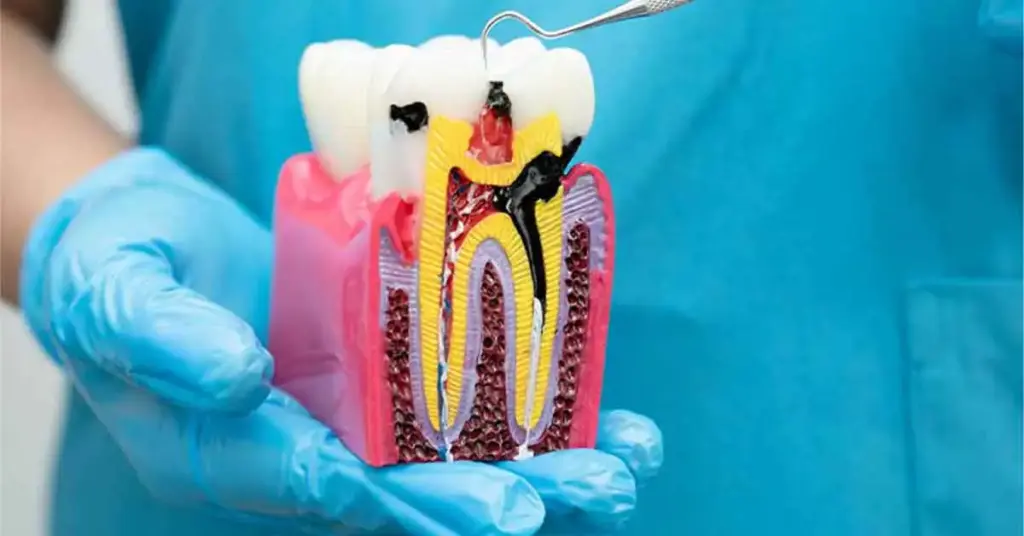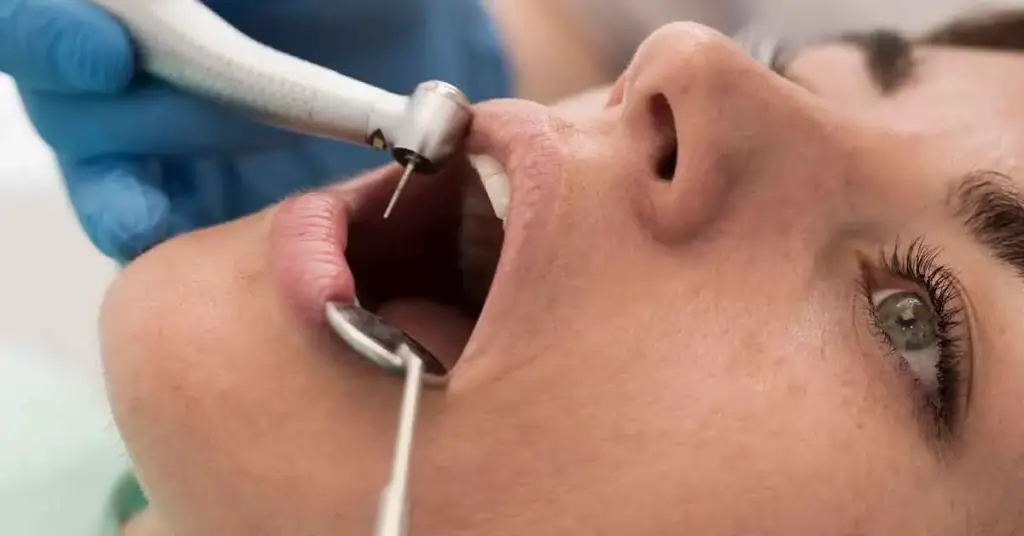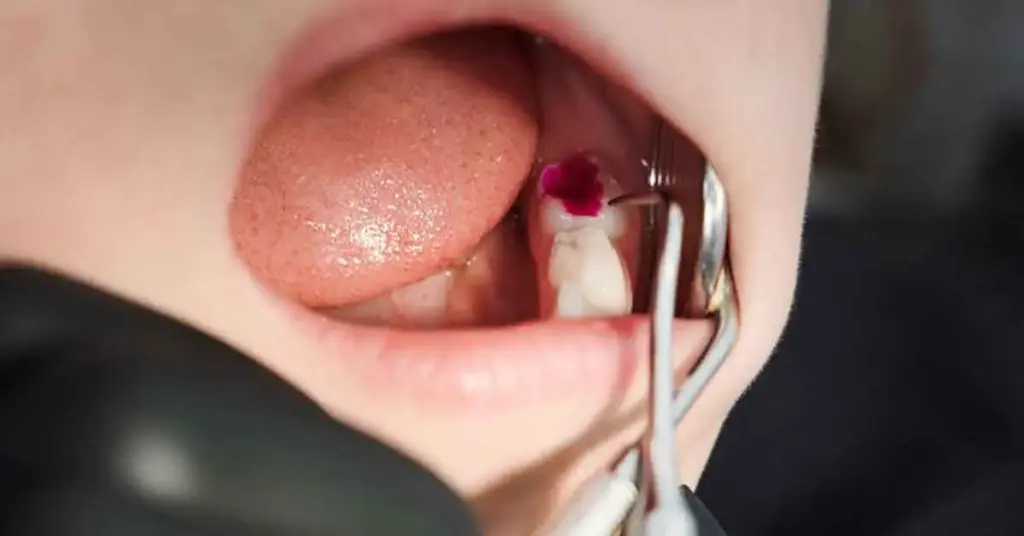


Root canal treatment is commonly known as a very painful and difficult type of treatment. However, with advances in technology, this process has become quite comfortable and painless.
Root canal treatment is not a painful treatment as commonly believed. On the contrary, this type of treatment is performed to eliminate the pain experienced by the patient and restore the health of the tooth.

How is root canal treatment performed is a question frequently asked by those who want to have root canal treatment. Before starting the treatment, the patient’s mouth and the area to be treated are completely numbed. This ensures that no pain is felt. The treatment session lasts an average of 45 minutes.
What is root canal treatment? Root canal treatment is a dental treatment method. It is widely known as a treatment method that people fear. For this reason, patients often postpone going to the dentist to avoid this treatment. However, this can lead to more serious problems. Therefore, it is important not to avoid treatment.
What is root canal treatment? This question is often asked by people who have dental problems. In short, root canal treatment is a treatment to save a tooth that is at risk due to the spread of decay.

Tooth decay causes many health problems, especially tooth loss. Conditions such as inflammation and infection cause severe tooth pain. Tooth decay promotes the spread of this condition. Root canal treatment prevents the spread of decay and such conditions.
How is root canal treatment performed? There are several stages in root canal treatment. These stages vary depending on the patient’s condition and mouth structure.
It would be wrong to think that root canal treatment is performed for every tooth decay. If the decay is not very widespread, this procedure is not necessary. If the decay has progressed, causing inflammation and putting the tooth at risk, root canal treatment is performed.
Decay causes inflammation in the tooth structure. If this inflammation progresses to the tooth’s nerve structure, it causes swelling and severe pain. Therefore, it is important to see a dentist early on, both to avoid pain and to prevent the tooth from being put at risk.
Tooth decay and the inflammation that follows is quite painful. It causes pain and high sensitivity in the tooth. It causes bad breath and discoloration, which is unsightly.
Inside the tooth, there are blood vessels and nerves extending to the root of the tooth. On the outside of the tooth is the hard enamel.
How is root canal treatment performed? Root canal treatment involves removing the nerve structure and soft tissue called pulp inside the tooth. The area where the tissue is removed is cleaned. Then, this area is filled again. This is a brief explanation of the treatment.
📌 Transform Your Smile in Istanbul 👑 Premium Dental procedures ✈️ Free 5-Star Hotell & VIP Transfer
The duration of root canal treatment varies depending on the patient’s dental problem. Some patients may require additional procedures. Therefore, the duration may be longer. In addition, factors such as the number of roots and the extent of infection in the root may also prolong the duration.

What is root canal treatment? It would be correct to say that it is a treatment performed to save the tooth. For this reason, root canal treatment can last up to 7 days depending on the patient’s dental problem.
How is root canal treatment performed? In response to this question, the treatment is performed in stages. For this reason, it may be difficult to specify a definite duration. The treatment is performed in sessions. The average duration of a session is 30 minutes.
The patient’s dental problem is important in determining the duration of the treatment. In some patients, the procedure can be completed on the same day because there is little infection and inflammation. In some patients, however, this is quite difficult.
When there is severe inflammation and infection, medication is applied to the cleaned area and allowed to dry. This process takes about a week. The duration of the procedure is explained to the patient during the initial examination.
After the treatment, certain procedures are performed before the tooth is closed. A special paste is applied to the opening to prevent any leakage. This prevents leakage and reinfection of the tooth.
The root canal treatment process may also involve additional procedures depending on the patient’s condition. The condition of the tooth is very important during this process. Sometimes the tooth becomes very weak and unprotected against external influences.
In such cases, coatings may also be applied to protect the health of the tooth. Of course, the dentist will decide on this process and guide you accordingly.

Root canal treatment is performed by a dentist. The dentist who performs this procedure is also called an endodontist. Now let’s look at the answer to the question How is root canal treatment performed? and its stages:
Root canal treatment involves these steps. This is also the answer to the question, “How is root canal treatment performed?” As mentioned earlier, these steps can be completed in a single session. However, depending on the patient’s condition, it may require several sessions.

If you are searching for the answer to the question, “What is root canal treatment?” with apprehension, do not worry. This procedure is actually painless. If you do not take precautions against tooth decay, the process will be more painful. Therefore, do not avoid getting root canal treatment.
The recovery time for root canal treatment varies. You should be careful for at least 1 to 3 weeks after treatment. How long it takes for your tooth to heal after root canal treatment is up to you. Under normal conditions, it is expected to heal within 1 week. However, if you are not careful during this process and skip your dental care, this period will be extended.
How root canal treatment is performed and the post-treatment period are just as important as the treatment itself. If the patient does not take care of their teeth after the procedure, the healing period will be prolonged. It may even cause serious infections. Therefore, the patient must strictly follow the doctor’s instructions after the procedure.
📌 Transform Your Smile in Istanbul 👑 Premium Dental procedures ✈️ Free 5-Star Hotell & VIP Transfer
What is root canal treatment? After this question, the question of pain comes to the fore. This causes considerable anxiety in people. However, you will not actually experience pain after root canal treatment.

After root canal treatment, your cleaned tooth root becomes sensitive. Of course, this is temporary. What you feel as pain is actually sensitivity caused by this. This condition can be relieved even with normal doses of painkillers.
What is root canal treatment? It is a treatment performed to save decayed teeth. However, this misleads people. This procedure is not performed on every decayed tooth.
Root canal treatment must be performed when tooth decay threatens the existence of the tooth. Decayed teeth cause inflammation. If this inflammation progresses to the pulp of the tooth, then this procedure must be performed.
Requirements for root canal treatment on a tooth with decay:
The above conditions require root canal treatment.

Tooth decay is the most common reason for this treatment. How is root canal treatment performed? In some cases, tooth decay is not necessarily required. Sometimes, the tooth structure can become infected and inflamed due to external factors. Such conditions damage the tooth roots.
Even if there is no tooth decay, infection can occur in the tooth due to external factors. This infection triggers certain problems inside the tooth. These conditions damage the nerve roots. Even if there is no decay, root canal treatment is necessary.
Root canal treatment is a treatment performed to save a tooth. Success is therefore very important. Unsuccessful treatment can lead to various problems, including tooth loss. For this reason, it is very important that root canal treatment is successful. Here are a few tips to help you determine whether root canal treatment is successful or not:

If you experience any of the above effects, the root canal treatment has failed. Or there may be problems caused by different reasons. Therefore, you should consult your dentist as soon as possible.
How root canal treatment is performed is just as important as the process itself. Several stages are necessary for the tooth to heal immediately and for any problems to be avoided. These stages are the care stages after treatment. Pay attention to care after root canal treatment to avoid problems with the tooth and surrounding area. Here are the steps you need to take:

It is quite difficult to give an exact price for root canal treatment. You need to have a preliminary examination by a dentist to get an accurate price. The reason for this is that, as mentioned in our article, additional procedures may be required for the treatment. These factors cause the prices of root canal treatment to vary. Please contact us for detailed information.
You can check out our work on our social media pages.
Root canal treatment is the process of cleaning the infected or damaged nerve and blood vessel tissue inside the tooth, disinfecting the canals, and filling them with filling material. It is performed to save the tooth without extraction.
No. Root canal treatment is performed under local anesthesia. No pain is felt during the procedure. There may be mild discomfort after the treatment, but this is temporary.
It is usually completed in 1–2 sessions. Depending on the extent of the infection in the tooth, the number of sessions may increase in some cases.
There may be mild sensitivity or pain for a few days after the procedure. This is normal and can be easily controlled with painkillers recommended by your doctor.
After a properly performed root canal treatment, pain is generally not experienced. However, in rare cases, infected tissue remaining in the canal or a new infection may cause pain.
Yes, the tooth loses its vitality because the nerve tissue is removed. However, it continues to function as long as it remains attached to the jawbone.
A crown is generally recommended for back teeth (such as molars) to reduce the risk of fracture. For front teeth, this depends on the structure of the tooth.
If the treatment fails, root canal treatment can be repeated. In some cases, tooth extraction may be necessary.
No. It is always better to preserve the natural tooth if possible. Root canal treatment gives the tooth a chance to remain in the mouth and preserves chewing function.
🌍 International Standards – We only work with globally approved and certified brands.
👩⚕️ Experienced Dentists – Our team combines years of expertise with continuous training.
🏥 Modern Technology – We use the latest 3D imaging, digital planning, and surgical techniques.
💎 Personalized Treatment Plans – Every smile is unique, and so is our approach.
✈️ Dental Tourism Advantage – With Istanbul’s cultural richness, your treatment journey also becomes a memorable travel experience.
At Niva Aesthetic, we believe that the right implant brand ensures not only a beautiful smile but also peace of mind. That’s why we carefully select the best options for our patients coming from all over the world.
📌 Transform Your Smile in Istanbul 👑 Premium Dental procedures ✈️ Free 5-Star Hotell & VIP Transfer